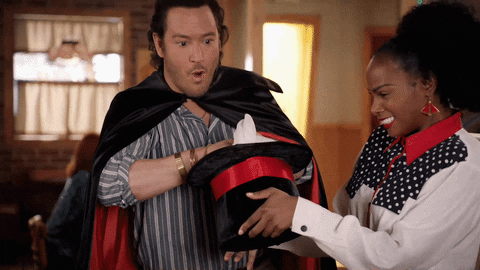Conjuring the illusion
The magic of seeing everything
Last week we touched on the moment of creativity and when it happens. Those magical occasions when, out of seemingly thin air, you can pull a metaphorical rabbit from a hat.
There is something quite magical about creativity, which got me thinking about the makers of magic, magicians, these conjurers who create illusions and experiences for us mere mortals to enjoy.
What is it that we can learn as creators from these sorcerers who play tricks on our minds with their witchcraft and potions?
Let’s start with what an illusion is…
“An illusion is when what you see and what you think you see are different things. Your senses gather information and send it to your brain. But your brain does not simply receive this information—it creates your perception”.
These illusions are only successful when the magician has considered every angle that the audience will experience, thereby creating an interpretation of reality that they want people to have: miss a small detail or get the angle wrong and the spell will be broken.
Creating something is no different to the magic of an illusion. To be successful the creator must consider all the information they’d like to be sent to their audience’s brain, in order to create an experience. This is the magician’s true creative power: to conjure a perception of reality by considering every part of the illusion and casting that spell on their unsuspecting victim.
Here’s what is key for any “creator”, the more ways you can see something through the audience’s eyes, the better the chance you have of creating an experience that is truly magical.
Your ability to build empathy, gather learnings and articulate your creation from a variety of differing perspectives will help you build a more complete spell, a holistic illusion that your too often single-minded approach might miss. This is the magic potion that will hook your audience and keep them spellbound.
So how do you do this?
A very simple, yet extremely effective approach to concocting this creative potion is to put yourself in the shoes of your audience, break down all the ingredients needed for the “illusion” you wish to create and consider as many perspectives as possible.
Every creative endeavour will have a different list of audience members with vastly differing perspectives to consider. Make a list of all the elements of the illusion you wish to create and who you want to enchant.
Let’s take the example of a chef, a culinary magician creating a new dish; they want it to be a showstopper, one that will put their restaurant on the map, leaving critics speechless and competition flabbergasted, propelling this particular kitchen wizard to award-winning fame (remember, THINK BIG!).
Here are some of the audience perspectives they could consider for their culinary illusion:
What are the best critics writing about now? What do they love or hate!?
What are the best chefs, the competition, making? What would make them take notice?
What dishes won culinary awards? What are the elements that made a winning dish?
What senses do you want to hit when people eat your dish?
What ingredients do you want to hero?
What memory do you want to invoke in people?
What would you want your guest to tell their friends after they’ve experienced your dish?
What textures and contrast do you want to create? Soft, crispy, crunchy...
How do you want people to feel after they’ve eaten the dish? Warm, content, wanting more?
How should the dish look on the plate? The colours, the height, the contrast etc.
How would you like the dish to be described on the menu?
How would you like the server to describe your dish?
How do you want your dish to be served?
These are just some examples of the types of questions our chef could ask themselves, to gather perspectives and build a more complete experience.
It doesn’t matter whether you’re a magician, a chef or even writing a blog, there is always an audience and it’s down to the creator to craft their illusions to be experienced as intended.
The magic comes from considering all perspectives and the trick is seeing through the eyes of others.








